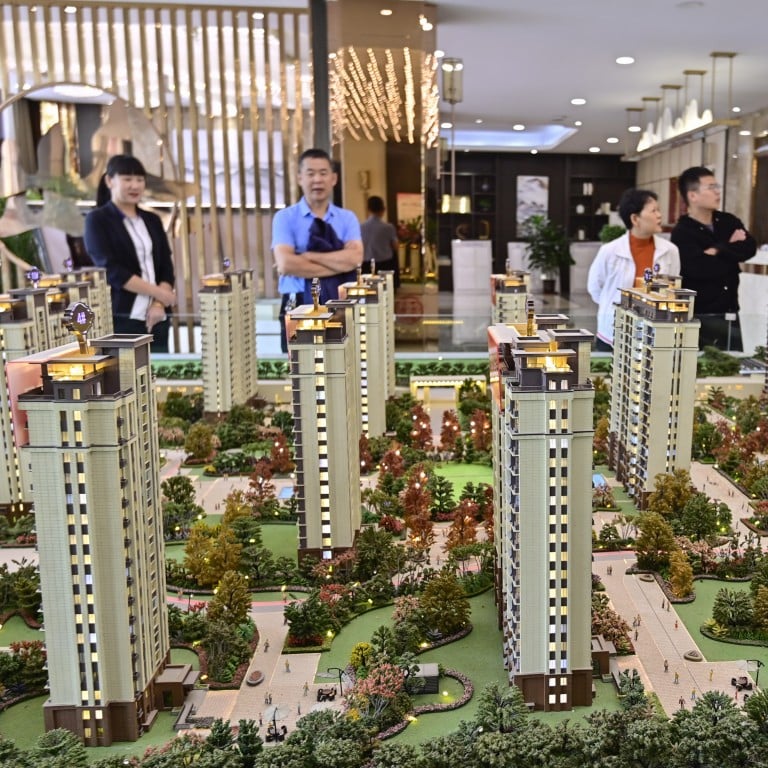
China’s money supply had a dismal November, as private-sector struggles and housing woes suppressed investment
- A key gauge of economic vigour is now reflecting ‘a weaker willingness among the private sector to invest, and a similarly depressed housing market’
- This is not making it any easier on Beijing’s policymakers to fulfil leadership’s vision of bringing economic stability back to China
One of China’s key gauges of investment sentiment and economic vigour – the nation’s basic money supply – has increased by the slowest monthly rate in nearly two years, surprising the market and showing how Beijing’s attempts to stabilise the economy still face strong headwinds going into 2024.
The so-called M1 money supply, comprising currency in circulation plus some banking deposits, grew by only 1.3 per cent in November, the People’s Bank of China said on Wednesday. The last time the M1 results were so weak was in January 2022, amid zero-Covid policies and disruptions, when there was a 1.9 per cent decrease in the basic money supply.
Meanwhile, the broader money supply – M2 – grew by 10 per cent and created the second-biggest gap between M1 and M2 growth since early 2017. The only time it was bigger was in January 2020 when the coronavirus started to take hold.
“Both figures are lower than market expectations, reflecting a weaker willingness among the private sector to invest, and a similarly depressed housing market,” said Ding Shuang, chief Greater China economist at Standard Chartered Bank.
Beyond China’s boondoggles, where will investments go when even water is a risk?
The monthly gap between M1 and M2 growth is often used to assess investment vitality. Since the M1 supply comprises only the most liquid of assets – meaning funds available for immediate investing – when the M1 growth rate lags farther behind M2, it shows that people are less interested in investing.
They might instead be putting money into long-term timed deposits with fixed interest yields – and this raises the M2 growth rate.
Chen Jianheng, a fixed-income analyst with China International Capital, attributed the low M1 growth to weak property sales and said it reflects a lack of vigour in the real economy.
“We believe that it is necessary to reverse the current situation of relatively high real interest rates,” he wrote in an online note posted on Wednesday night, calling for monetary authorities to lower rates to stimulate economic activities.
Chinese banks extended 1.09 trillion yuan (US$153 billion) worth of new yuan-denominated loans last month, down 9.9 per cent from a year earlier.
Another liquidity-measurement tool, total social financing, or “aggregate financing to the real economy”, rose by 23.5 per cent in November from a year earlier, to 2.45 trillion yuan.
China’s ‘involuted’ new-energy industry awash with self-defeating overcapacity
Apart from continuing its expansionary monetary policy, Beijing needs to increase its lending support to prop up the property sector and reverse dismal business expectations, said Ding at Standard Chartered Bank.
“The loan volume to the real economy is not small. However, these funds may flow more to key areas, including technology and high-end manufacturing, in the future, rather than to the real estate sector, where the demand for loans is significantly higher,” he said.
If banks can sate the voracious appetite for property loans, this would promote more home sales, boost consumption and instil new confidence in investors, Ding said.
Medium- and long-term loans to households, alternatives to a mortgage, rose to 233.1 billion yuan in November from 70.7 billion yuan in October, as Beijing has moved to stabilise the real estate sector.
Borrowing growth in corporate long- and medium-term loans stood at 446 billion yuan in November, down 39.5 per cent from a year prior, central bank data showed.

